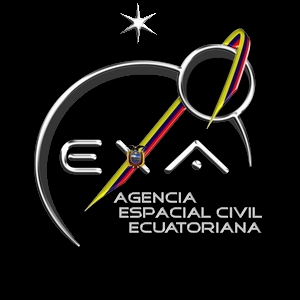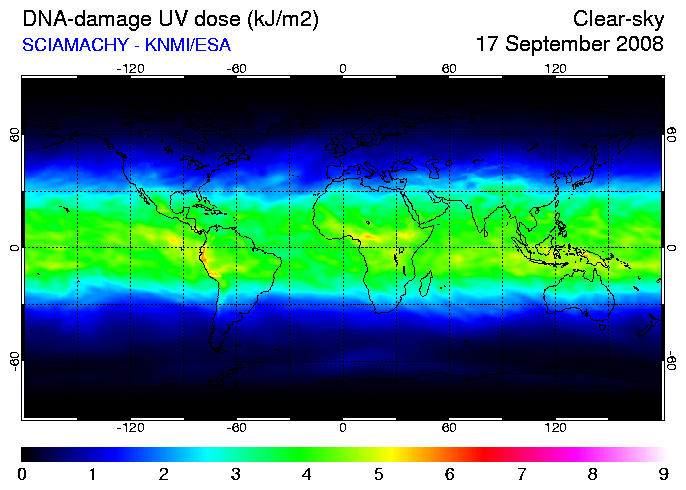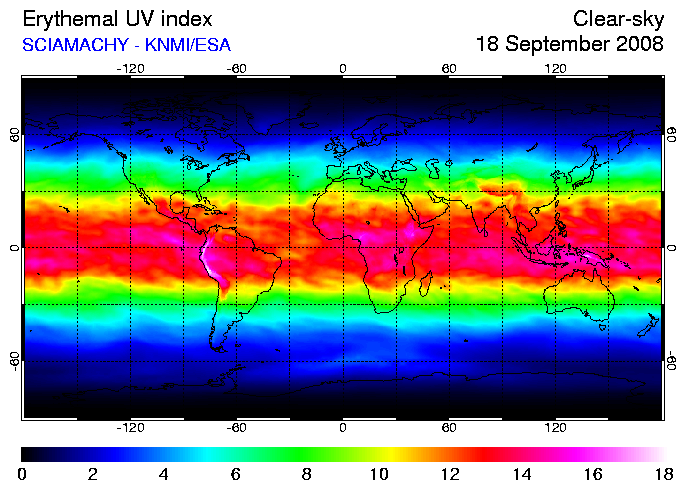
ECUADORIAN
CIVILIAN SPACE AGENCY PUBLISHES THE HYPERION REPORT: October 22 2008, Guayaquil - Ecuador: The Ecuadorian Civilian Space Agency - EXA published today the HYPERION Report, the results of a field study about the state of the ozone layer over equatorial latitudes, based on images from 10 different satellites and instruments from ESA, Environmental Canada, NASA, the KNMI, the DLR and 2 ground meteorological stations from EXA on Ecuadorian territory that proves the existence of a great weakening of the ozone layer over equatorial latitudes, resulting in extreme UV radiation hitting Ecuadorian territory, far exceeding the maximum tolerance or safety limit established for human health. The radiation levels detected by the ground stations correlate perfectly with the satellite imaging and exceeds 14 UVI for the coastal city of Guayaquil and also exceeds 24 UVI for the capital city of Quito, the maximum tolerable level of radiation, as established by the UV Index of the World Health Organization (WHO) and the World Meteorological Organization (WMO) is 11 UVI. The study, that has taken 1 year to be completed found also that the power of the radiation is so high that even the normal could cover over this cities is unable to lower it down to acceptable human tolerance levels. Although only Ecuadorian UV levels have been measured directly on the ground, satellite imaging indicates that Colombia and Peru are also being hit by extreme levels of UV radiation. The equipment used by EXA on this ground measurements is state of the art equipment, proven in Antarctic polar regions and in use be the University of Stanford and the Argentinean CONAE National Space Agency. EXA announced too that starting today the HYPERION Reactive Alert Network starts operations as a public free service that will allow the population to know, in five minutes intervals, what is the radiation levels they are being exposed to and which actions they should take to avoid danger, recommendations based on the standard proposed by the WHO y WMO, EXA also urged publicly to the mobile phone companies present in the country to transmit this information to their customers in the form of a simple text message to get this information in real time to the inhabitants of the areas protected by the HYPERION Network. This network covers the major cities of Quito an Guayaquil, protecting more than 4 million people by providing them with real time information vital to avoid exposure to harmful levels of radiation that in the mid term can lead to skin cancer, many types of blindness, a weakening of the immune system and therefore leaving them exposed to many illness. EXA also revealed that the more powerful frequency of the UV radiation is in the range of 340 nm, a well known type of radiation that can alter human DNA, with the potential to cause cellular damage and mutations, this type of radiation reaches 14 watts per square meter in Quito, when normal levels should be in the range of 1 watt per square meter. EXA directives made a call to the Ecuadorian government to urgently intervene to protect the population, due the fact that the HYPERION network can only protect 28% of the population, the 72% remaining is still left unprotected. they also said to be ready to support the effort and transfer the capabilities developed by them to the government, as EXA is an NGO with limited funding and this is a matter of national security that should be attended by the goverment. The announced too that a copy of the HYPERION Report will be sent to the diplomatic representatives of the involved countries, but specially to Colombia and Peru, many recommendations were emitted as those like considering altering the schedule of the breaks in the schools to protect the children due to their high vulnerability, lift the actual restrictions for the use of anti solar films on the vehicles, the use of solar filters with an SPF over 70 for the coastal and Amazonia region and over SPF 100 for the Andean region and the call for the declaration of a National Climatic Emergency state. References:
The HYPERION Report
|





